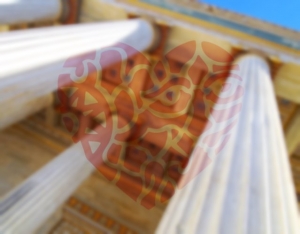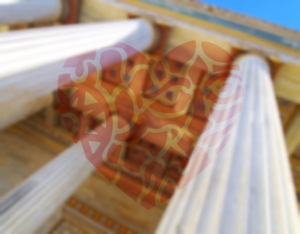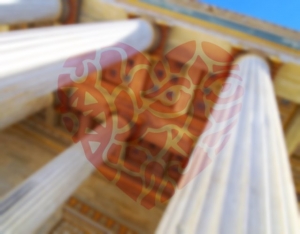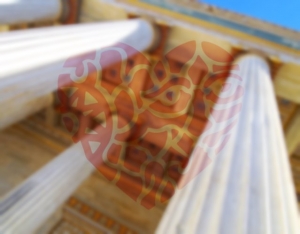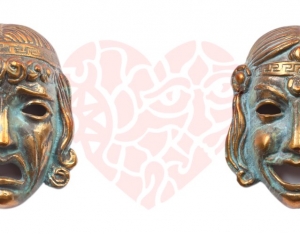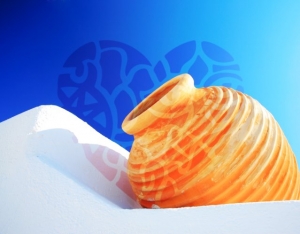Thodoris Bgenopoulos
Magnesia, like any other place in Greece, maintains its own customs and traditions and the visitor has a chance to get to know them through various events.
During the last ten days of August, a representation of the traditional Pelion wedding takes place in Portaria. Marriage was a process that lasted eight days, until the couple would go to church on Sunday. In the meantime, visitors attending the representation have the opportunity to see first hand all the customs characterizing the Pelion marriage: The cutting of the wedding dress, the organization of the dowry, the ritual shaving of the groom and of course the wedding itself, which ends with a traditional feast with dancing, singing and plenty of food and drink. If you decide to go in Pelion for vacations, visiting Portaria is a must.
Easter in Magnesia is particularly beautiful, especially in the city of Volos or the picturesque traditional villages. The procession of the Epitaph, the Resurrection of Christ, the fireworks and of course the Eastern table is a once in a lifetime experience.
Apart from Easter there are many more Greek festivals, panigiria and celebrations, full of dancing, singing and feasting. Some of them are:
- In June, Agiou Panteleimona, in Potistika
- July 24, Agios Vlasios, in Agios Vlasios
- August 15 in several places throughout Magnesia
- 13 -14 September, Tou Stavrou (the day of the Cross), in Kato Gatzea
Besides panigiria, in Magnesia many products festivals are organized in different parts of the region, such as the feast of the apple in Zagora (September), wine in New Anchialos (August), tsipourou in Katihori (June), cherry in Agios Lavrentios (June) and sausage in Stagiates (July). In all these celebrations you will have tha chance to taste delicious local goods for free and have a whale of time.
Still thinking about it? Plan your trip to Magnesia!
The Folk Art and History Museum of Pelion is located in Makrinitsa, Pelion.
It is housed in a mansion that is an attraction itself. Built in 1844, it belonged to the Topalis family that gave it to the community of Makrynitsa in order to house the folk and historical treasures of the village and the entire Pelion.
Once you reach the Folk Art and History Museum of Pelion , you can admire among others:
- Traditional Pelion costumes
- Elaborately woven textiles and rugs
- Housewares from copper, clay and wood
- Frescoes from Pelion mansions
- Important historical relics, with most notable being the banner of the 1878 revolution
- Works of the painter Christopoulos, who came from the Pelion
A visit to the Folk Art and History Museum of Pelion will bring you closer to the Pelion culture and tradition, making your holidays there even more interesting and beautiful.
More information concerning the Folk Art and History Museum of Pelion can be found in 24280 99505.
The Archaeological Museum of Almyros, is in Almyros, in the region of Magnesia.
The Archaeological Museum of Almyros was founded in 1930 and the expenses were covered by the city's prominent residents, in an effort to preserve the antiquities of the region. The museum building was greatly destroyed twice, while its demolition had also been discussed. Yet, in 1998 it was thoroughly repaired and renovated and since then, the museum welcomes several visitors every year.
In the halls of the museum you can see :
- Marble sculptures from the temples of Asclepius and Athena
- Figurines, tools and coins from excavations in homes from the Hellenistic Times
- Weapons, jewelry and pottery excavated from tombs in the area "Voulokalyva"
- Tombstones
- The library of the Filarchaiou Company "Othris" who pioneered in the creation of the museum, is in a separate hall of the museum
Archaeological Museum of Almyros: Address, Athinon 50, Almyros.
More information about the Archaeological Museum of Almyros can be found in the number 24220 21326.
The Railway Museum of Thessaly is situated in Volos, the capital city of Magnesia.
Founded in 2006, the Railway Museum of Thessaly is housed on the first floor of the Volos railway station, which previously served as a residence for each stationmaster. The station's building and the museum were built in 1882 by Evaristo de Chirico, father of the famous painter Giorgio de Chirico. Actually, in the museum you will see Evaristo de Chirico's drawings for the railways construction.
In the Railway Museum of Thessaly, the visitor learns about the railway history and some of the items he can see include:
- Railway employees uniforms
- Ticket Box Offices
- Stations Watches
- Lamps and machine accessories
- Photos, archives, rare documents and historical documents
The Railway Museum of Thessaly is an excellent choice to experience the train history in the region, especially if you combine it with a trip in "Moutzouris", the traditional train that journeys through the picturesque Pelion villages.
Railroad Museum of Thessaly: Address, Volos Railway Station, Volos.
More information about the Railway Museum of Thessaly can be found in the number 24210 23424 and 24210 23644.
The Entomological Museum of Volos is in Magnesia's capital city, Volos.
This museum was envisioned and created by the Agronomy Professor Athanasios Koutroumbas. The Entomological Museum of Volos is one of a kind in Greece and one of the most remarkable in the entire Balkans.
Its exhibits, which are constantly enriched, include over 35 000 different insect species with emphasis on Lepidoptera. Did you know that the biggest butterfly in the world, Thysania Agrippina, lives in South America and has a wingspan of over 30 cm? Well, you will here! Also note that usually the founder himself guides visitors through the museum halls.
Entomological Museum of Volos: Address, Zachos & General Makrygiannis Street, Volos.
More information about the Entomological Museum of Volos can be found in the number 24210 60601 and 24210 48556.
Kitsos Makris Folklore Center is located in Volos, the capital of Magnesia.
The center is the result of a lifetime work by the important Greek folklorist Kitsos Makris (1917-1988). It is worth-noting that Kitsos Makris bequeathed his house to the University of Thessaly for the center's housing.
In Kitsos Makris Folklore Center, you will have a chance to see his folklore collection, his personal library and his archive, consisting of 4 thousand photographs and 2,500 slides, many of which depict fine objects of the folk tradition that do not survive today.
Among the many interesting exhibits of the folklore center, the following stand out:
- Works by the very important Greek painter Theophilos, who lived and worked in Volos for many years
- Mural paintings by Pagonides (father and son both painters) that decorated mansions in Pelion
- Paintings with marine themes by N. Christopoulos
One visit to Kitsos Makris Folklore Centre is enough, to give you a clear picture of the folk art and tradition of Magnesia.
Kitsos Makris Folklore Centre: Address, Kitsos Makris Street 38, Volos.
More information about the Kitsos Makris Folklore Centre, can be found on the number 24210 37119.
The Natural History Museum of Volos is located in the capital of Magnesia, Volos.
First operating in 2012, The Natural History Museum of Volos aims to collect study and present the natural history of the wider region of Magnesia.
It is divided into three sections:
- The Hall of Earth, showing the evolution of the planet, while hosting minerals and rocks
- The Hall of Life, showing the evolution of life on Earth, while hosting fossils of vertebrates and invertebrates
- The Hall of Human, showing the evolution of the humans species from primates to Homo Sapiens
The Natural History Museum of Volos, also hosts temporary exhibitions and organizes several activities, events and trips related to its subject. A visit to this museum will surely be rewarding!
Volos Natural History Museum: Address, Mikrasiaton Street 1 & Zachos, Volos.
More information concerning the Volos Natural History Museum, can be found in www.volosmuseum.gr and the number 24210 36555.
Athanassakio Archaeological Museum of Volos is in Volos, the capital of Magnesia.
Created in 1909, the Archaeological Museum of Volos is one of the oldest museums in Greece. The museum building was built thanks to a donation by Alexios Athanasakis from Portaria village in Pelion, which is why it was named after him, "Athanassakio".
In the museum you will see archaeological findings from all over Thessaly, dating back to the Paleolithic period up to the Roman era. Among its exhibits special attention is drawn to the fine funerary written columns of the 3rd century BC that have intense traces of color. Also, in the halls of the museum you can see Neolithic tools, pottery and jewelery as well as findings from ancient tombs in the area. Occasionally, various temporary exhibitions are presented in the museum, each with its own interest.
A visit to the Archaeological Museum of Volos will give you an idea of the region's history.
Archaeological Museum of Volos: Address, street Athanasaki 1, Volos.
More information about the Archaeological Museum of Volos can be found in the number 24210 25285.
Vacations in Magnesia give you the opportunity to watch many remarkable theatrical performances. The city of Volos has 3 excellent theaters:
The Volos Municipal Theatre, with a capacity of 1000 spectators that has one of the greatest scenes in the entire Balkans.
The open-air Volos Municipal Theatre "Melina Mercouri"
The open-air Nea Ionia Municipali Theatre
These three theaters together with the Demetrias ancient theater and other selected spaces turn Volos into a real theater-town. Performances by the notable Municipal Regional Theatre of Volos (DIPETHE) are also organized here, while exceptional troupes are hosted presenting their rich repertoire to the public.
Especially during summer months, theatrical performances take place in many parts of the county, even in the picturesque villages of Pelion. No matter where you find yourself, you will definitely have tha chance to watch a great theatrical performance.
More information on theater performances in Magnesia can be found in the municipality of Volos in the number 24 213 50100.
If you love the arts, you will surely find something interesting while vacationing in Magnesia.
Start your art wandering from Volos and the Art Center "Giorgio de Chirico", which owes its name to the great Italian painter born in Volos. In the building's halls, the Alexander Damtsa collection is exhibited, including over 500 works by Greek artists, mainly from the 19th and early 20th century. The "Giorgio de Chirico" Art Center also hosts various temporary exhibitions.
Afterwards, head to Chryssoula Zogia gallery. The famous Greek painter was born in Volos in the early 20th century. After passing away in 1992, her house and her works were given to the Municipality of Volos. Today the magnificent two-story red house that once was the residence of the Voliotissas painter is open to the public.
Leaving behind the city of Volos does not mean you are leaving behind the arts.
Your next stop should be the museum Theophilus in Anakasia. Here is a 19th century mansion where the famous painter Theophilos (Hadjimichael) left his artistic touch, by decorating the lobby's walls. The frescoes you can see today are an excellent artwork and it’s definitely worth a look.
Reutning to Magnesia, you will find the municipal gallery in Almyros village, hosting 65 works of the painter Thanassis Akrivopoulos.
Yet, the big "surprise" in the art-world comes from Pelion. In each of the traditional villages, special spaces hosting art exhibitions have been created and wait for you to discover them.



